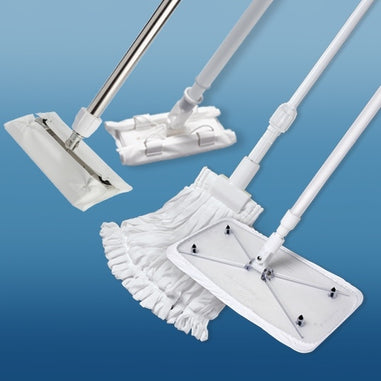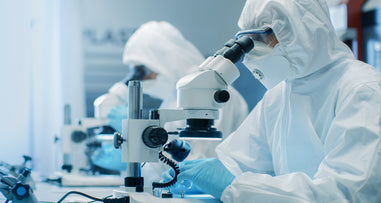- No products in the cart.
Designing a cleanroom lab requires careful planning and attention to detail to create a controlled environment that meets the stringent requirements of sensitive scientific research and manufacturing processes. From selecting the appropriate layout and construction materials to choosing suitable HVAC systems and equipment, every aspect plays a crucial role in ensuring the success of the cleanroom. In this blog post, we will provide guidance on designing and outfitting a cleanroom lab, highlighting key factors to consider, common challenges, and best practices to create a highly efficient and contamination-free environment.
-
Define Cleanroom Classification and Purpose:
The first step in designing a cleanroom lab is to determine the desired cleanroom classification based on the level of cleanliness required. Classifications, such as ISO classes or Federal Standard 209E, define the allowable particle counts per cubic meter of air. Additionally, clearly defining the lab's purpose, whether it is for research, manufacturing, or testing, will help determine the specific requirements and layout considerations.
-
Plan the Layout and Flow:
Efficient utilization of space and a logical workflow are crucial for cleanroom lab design. Consider the placement of workstations, equipment, storage areas, and personnel traffic flow. Segregate areas based on cleanliness requirements, such as having separate gowning and material transfer zones. Minimize potential cross-contamination by maintaining unidirectional airflow from cleaner to less clean areas.
-
Select Suitable Construction Materials:
Choosing appropriate construction materials is vital for maintaining cleanliness and durability. Non-porous and non-shedding materials, such as stainless steel, epoxy flooring, and smooth, wipeable walls, are commonly used in cleanroom labs. Ensure that all materials are compatible with cleanroom cleaning agents and meet necessary fire, chemical, and microbial resistance standards.
-
Optimize HVAC Systems:
Proper HVAC (Heating, Ventilation, and Air Conditioning) systems are essential for maintaining cleanroom conditions. Ensure that the system provides precise control over temperature, humidity, and airflow rates. Use high-efficiency particulate air (HEPA) filters to remove particles and maintain positive pressure inside the cleanroom. Implement airlocks and interlocking doors to prevent air infiltration.

-
Integrate Reliable Monitoring and Control Systems:
Monitoring and control systems are crucial for maintaining cleanroom conditions and ensuring regulatory compliance. Install real-time monitoring systems to continuously monitor critical parameters such as temperature, humidity, pressure differentials, and particle counts. Implement alarm systems that alert personnel in case of deviations from set parameters.
-
Choose Cleanroom-Compatible Equipment:
When selecting equipment for the cleanroom lab, consider its compatibility with cleanroom requirements. Opt for equipment designed specifically for cleanroom environments, ensuring they are constructed from non-shedding materials, easy to clean, and have low particle generation. Regular maintenance and cleaning schedules for equipment should be established to prevent contamination risks.
-
Implement Proper Gowning and Entry Procedures:
Establish and enforce strict gowning and entry procedures for personnel to minimize contamination risks. Provide designated gowning areas equipped with appropriate apparel, including cleanroom suits, gloves, masks, and shoe covers. Implement a step-by-step gowning process and educate personnel on proper gowning techniques and hygiene practices.
Common Challenges
There are a number of common challenges that can be encountered when designing a cleanroom lab. These challenges include:
- Maintaining a high level of cleanliness: It can be difficult to maintain a high level of cleanliness in a cleanroom lab. This is because there are a number of sources of contamination, such as people, equipment, and materials.
- Controlling the airflow: The airflow in a cleanroom lab is critical to maintaining a high level of cleanliness. The airflow should be designed to prevent particles from settling on surfaces and to remove particles from the air.
- Selecting the right equipment: The equipment that is used in a cleanroom lab must be compatible with the cleanroom environment. The equipment must be made from materials that do not shed particles and must be easy to clean.
Conclusion:
Designing a cleanroom lab requires careful consideration of various factors, from defining the cleanroom classification and purpose to optimizing HVAC systems, selecting suitable materials and equipment, and implementing proper monitoring and gowning procedures. Following these tips and best practices will help create a cleanroom lab that ensures optimal performance, regulatory compliance, and contamination control.
Additional Information
In addition to the information that has been provided in this blog, there are a number of resources available that can provide additional guidance on designing a cleanroom lab. These resources include:
- International Organization for Standardization (ISO): The ISO publishes a number of standards that can be used to design and build cleanroom labs. Website: https://www.iso.org/
- American Society for Testing and Materials (ASTM): The ASTM publishes a number of standards that can be used to design and build cleanroom labs. Website: https://www.astm.org/
For over 40 years, Lab Pro Inc. has been committed to delivering highest quality lab supplies, hand tools, lab equipment, chemicals, distance learning kits, and PPE apparel. Renowned by global medical device companies and laboratories, we ensure exceptional quality in every product. Contact us online or call 888-452-2776 to learn more. Discover top-notch lab supplies and elevate your experiments today!












































